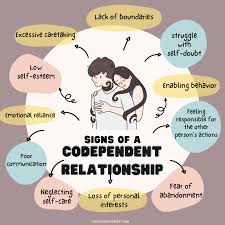Artificial intelligence has changed how we approach writing. It can now generate blog posts, marketing content, product descriptions, and even academic essays in seconds.But as easy as that is, there’s one catch: a lot of it still reads like it was produced by a machine. If you want your writing to read as personal, conversational, and authentic, you need to be able to humanize AI writing well.
Here, we will deconstruct why it’s essential to humanize AI writing, the reason AI-written content sounds robotic, and how to humanize your writing without rewriting everything from scratch.
What Does It Mean to Humanize AI Text?
Table of Contents
To humanize AI text is to rewrite or edit AI-generated content so that it reads the way a real person would naturally speak or write. It’s not about fooling people—it’s about making your audience connect with your message.
Human writing is smoother, richer emotionally, and not trapped in repetitive, overly formal-sounding language characteristic of AI generation.
The goal is to preserve the efficiency of AI tools while ensuring the end result sounds relatable and credible.
Read Also:Galaxy S25 Series: Samsung to offer Galaxy S25 Ultra with 16GB RAM in India
Why AI Text Often Feels Robotic
AI tools are incredibly powerful, but they still follow patterns. That’s part of what makes them so good at producing clear, coherent content—but also why they often fall short on tone and personality. Here’s what typically gives away AI-written text:
Sentences are similar in length and rhythm
The tone is overly formal or dry
There’s a lack of emotion or unique perspective
Repetitive words and phrases appear
It often avoids slang, contractions, or idioms
These traits can make your content sound flat—even when the information is accurate.
Why You Should Humanize AI Text
1. Engage More with Readers
Humans engage more with things that seem legitimate. Whether a blog post, advertisement, or product description is being written, readers will stick around longer when the content itself appears to come from a living being.
2. Don’t Be Detected with AI Detection Tools
Most platforms currently employ AI detectors (such as GPTZero or Turnitin’s AI checker) to identify machine-generated content. If you’re employing AI to assist with writing, making your text more human can keep you in the clear—ethically and pragmatically.
3. Maintain Your Brand Voice or Personal Style
Your voice counts. You’re either a brand or an individual, so your writing has to sound coherent and conversational. AI by itself can’t capture your singular voice, but you can influence it with good editing.
Tips to Humanize AI Text Effectively
If you’re starting with AI-generated content, here are some simple ways to make it sound more human:
1. Change Sentence Structure
Vary short and long sentences. Break up monotony by using questions, fragments, or transitions that mirror natural speech.
Example:
AI: “Content marketing is essential for business growth because it builds customer relationships.”
Humanized: “Let’s face it—content marketing isn’t just a trend. It’s how businesses build real, lasting relationships with their audience.”
2. Add Personal Opinions or Insights
AI can’t offer lived experience. Adding a line with your perspective, even briefly, makes a big difference.
Example: “In my experience, even a small tweak in tone can completely change how a message is received.”
3. Use Conversational Language
Contractions, idioms, and casual expressions can instantly make content feel more approachable.
Instead of: “It is important to understand the customer journey.”
Try: “You’ve got to understand the customer journey—it’s where everything starts.”
4. Read It Out Loud
This simple habit can help you catch anything that feels stiff or unnatural. If you wouldn’t say it out loud, rewrite it until you would.
Using Tools to Humanize AI Text
Manually rewriting every paragraph isn’t always realistic, especially for teams or high-volume writers. That’s where AI humanizer tools come in.
Platforms like CudekAI offer tools that automatically adjust AI-generated text to make it more human. These tools are designed to:
Break up repetitive patterns
Reshape tone and rhythm
Add natural-sounding language
Help your content pass AI detection
You can start with a quick AI draft, run it through a humanizer, and then add final edits for polish.
Read Also:Technology Marketing Tips and Tricks
When Should You Humanize AI Text?
Not every piece of content needs a deep human touch, but it’s especially important when:
You’re publishing under your name or brand
Your content will be graded or reviewed by humans
You’re trying to connect emotionally with your audience
You need to avoid AI-detection software
You want to maintain a consistent, credible voice
Conclusion: AI is the Tool—You’re the Voice
There’s no denying that AI is a powerful writing assistant. But it’s just that—an assistant. The real value comes when you combine its efficiency with your personality, insight, and voice.
Learning how to humanize AI text isn’t just a technique—it’s becoming a vital skill for content creators, marketers, students, and businesses alike. Use AI to get started, then make it yours.
In the end, the best content still feels human—because it is.









